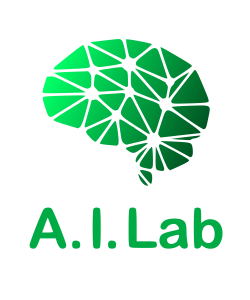Featured Publications
 (Open access) |
Why Tuning the Control Parameters of Metaheuristic Algorithms Is So Important for Fair Comparison?Anezka Kazikova, Michal Pluhacek, Roman Senkerik Mendel, Vol 26 No 2, 2020, Published: 2020-12-21 Although metaheuristic optimization has become a common practice, new bio-inspired algorithms often suffer from a priori ill reputation. One of the reasons is a common bad practice in metaheuristic proposals. It is essential to pay attention to the quality of conducted experiments, especially when comparing several algorithms among themselves. The comparisons should be fair and unbiased. This paper points to the importance of proper initial parameter configurations of the compared algorithms. We highlight the performance differences with several popular and recommended parameter configurations. Even though the parameter selection was mostly based on comprehensive tuning experiments, the algorithms‘ performance was surprisingly inconsistent, given various parameter settings. Based on the presented evidence, we conclude that paying attention to the metaheuristic algorithm’s parameter tuning should be an integral part of the development and testing processes. Cite as: Kazikova, A., Pluhacek, M., & Senkerik, R. (2020, December). Why Tuning the Control Parameters of Metaheuristic Algorithms Is So Important for Fair Comparison?. In Mendel (Vol. 26, No. 2, pp. 9-16). DOI: https://doi.org/10.13164/mendel.2020.2.009. |
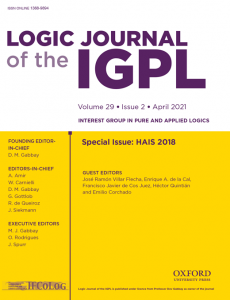 |
Orthogonal Learning Firefly AlgorithmTomas Kadavy, Roman Senkerik, Michal Pluhacek, Adam Viktorin Logic Journal of the IGPL, Volume 29, Issue 2, April 2021, Pages 167–179 The primary aim of this original work is to provide a more in-depth insight into the relations between control parameters adjustments, learning techniques, inner swarm dynamics and possible hybridization strategies for popular swarm metaheuristic Firefly Algorithm (FA). In this paper, a proven method, orthogonal learning, is fused with FA, specifically with its hybrid modification Firefly Particle Swarm Optimization (FFPSO). The parameters of the proposed Orthogonal Learning Firefly Algorithm are also initially thoroughly explored and tuned. The performance of the developed algorithm is examined and compared with canonical FA and above-mentioned FFPSO. Comparisons have been conducted on well-known CEC 2017 benchmark functions, and the results have been evaluated for statistical significance using the Friedman rank test. Cite as: Kadavy, T., Senkerik, R., Pluhacek, M., & Viktorin, A. (2021). Orthogonal learning firefly algorithm. Logic Journal of the IGPL, 29(2), 167-179., DOI: 10.1093/jigpal/jzaa044. |
 |
How Does the Number of Objective Function Evaluations Impact Our Understanding of Metaheuristics Behavior?Anezka Kazikova, Michal Pluhacek, Roman Senkerik IEEE Access, Volume: 9, 2021 Comparing various metaheuristics based on an equal number of objective function evaluations has become standard practice. Many contemporary publications use a specific number of objective function evaluations by the benchmarking sets definitions. Furthermore, many publications deal with the recurrent theme of late stagnation, which may lead to the impression that continuing the optimization process could be a waste of computational capabilities. But is it? Recently, many challenges, issues, and questions have been raised regarding fair comparisons and recommendations towards good practices for benchmarking metaheuristic algorithms. The aim of this work is not to compare the performance of several well-known algorithms but to investigate the issues that can appear in benchmarking and comparisons of metaheuristics performance (no matter what the problem is). This article studies the impact of a higher evaluation number on a selection of metaheuristic algorithms. We examine the effect of a raised evaluation budget on overall performance, mean convergence, and population diversity of selected swarm algorithms and IEEE CEC competition winners. Even though the final impact varies based on current algorithm selection, it may significantly affect the final verdict of metaheuristics comparison. This work has picked an important benchmarking issue and made extensive analysis, resulting in conclusions and possible recommendations for users working with real engineering optimization problems or researching the metaheuristics algorithms. Especially nowadays, when metaheuristic algorithms are used for increasingly complex optimization problems, and meet machine learning in AutoML frameworks, we conclude that the objective function evaluation budget should be considered another vital optimization input variable. Cite as: A. Kazikova, M. Pluhacek and R. Senkerik, „How Does the Number of Objective Function Evaluations Impact Our Understanding of Metaheuristics Behavior?,“ in IEEE Access, vol. 9, pp. 44032-44048, 2021, DOI: 10.1109/ACCESS.2021.3066135.
|
 (Open Access) |
Why Tuning the Control Parameters of Metaheuristic Algorithms Is So Important for Fair Comparison?Anezka Kazikova, Michal Pluhacek, Roman Senkerik Mendel, Vol 26 No 2, 2020, Published: 2020-12-21 Although metaheuristic optimization has become a common practice, new bio-inspired algorithms often suffer from a priori ill reputation. One of the reasons is a common bad practice in metaheuristic proposals. It is essential to pay attention to the quality of conducted experiments, especially when comparing several algorithms among themselves. The comparisons should be fair and unbiased. This paper points to the importance of proper initial parameter configurations of the compared algorithms. We highlight the performance differences with several popular and recommended parameter configurations. Even though the parameter selection was mostly based on comprehensive tuning experiments, the algorithms‘ performance was surprisingly inconsistent, given various parameter settings. Based on the presented evidence, we conclude that paying attention to the metaheuristic algorithm’s parameter tuning should be an integral part of the development and testing processes. Cite as: Kazikova, A., Pluhacek, M., Senkerik, R. (2020, December). Why Tuning the Control Parameters of Metaheuristic Algorithms Is So Important for Fair Comparison?. In Mendel (Vol. 26, No. 2, pp. 9-16). DOI: https://doi.org/10.13164/mendel.2020.2.009. |
 (Open Access) |
Dog Face Detection Using YOLO NetworkAlzbeta Tureckova, Tomas Holik, Zuzana Kominkova Oplatkova Mendel, Vol 26 No 2, 2020, Published: 2020-12-21 This work presents the real-world application of the object detection which belongs to one of the current research lines in computer vision. Researchers are commonly focused on human face detection. Compared to that, the current paper presents a challenging task of detecting a dog face instead that is an object with extensive variability in appearance. The system utilises YOLO network, a deep convolution neural network, to~predict bounding boxes and class confidences simultaneously. This paper documents the extensive dataset of dog faces gathered from two different sources and the training procedure of the detector. The proposed system was designed for realization on mobile hardware. This Doggie Smile application helps to snapshot dogs at the moment when they face the camera. The proposed mobile application can simultaneously evaluate the gaze directions of three dogs in scene more than 13 times per second, measured on iPhone XR. The average precision of the dogface detection system is 0.92. Cite as: Turečková, A., Holík, T., & Komínková Oplatková, Z. (2020). Dog face detection using yolo network. In Mendel. Brno University of Technology. DOI: https://doi.org/10.13164/mendel.2020.2.017. |
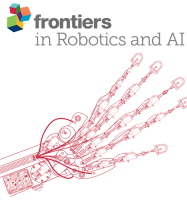 |
Improving CT Image Tumor Segmentation Through Deep Supervision and Attentional GatesAlžběta Turečková, Tomáš Tureček, Zuzana Komínková Oplatková, Antonio Rodríguez-Sánchez Frontiers in Robotics and AI, vol. 7, pp. 106, 2020 Computer Tomography (CT) is an imaging procedure that combines many X-ray measurements taken from different angles. The segmentation of areas in the CT images provides a valuable aid to physicians and radiologists in order to better provide a patient diagnose. The CT scans of a body torso usually include different neighboring internal body organs. Deep learning has become the state-of-the-art in medical image segmentation. For such techniques, in order to perform a successful segmentation, it is of great importance that the network learns to focus on the organ of interest and surrounding structures and also that the network can detect target regions of different sizes. In this paper, we propose the extension of a popular deep learning methodology, Convolutional Neural Networks (CNN), by including deep supervision and attention gates. Our experimental evaluation shows that the inclusion of attention and deep supervision results in consistent improvement of the tumor prediction accuracy across the different datasets and training sizes while adding minimal computational overhead. Cite as: Tureckova, A., Turecek, T., Kominkova Oplatkova, Z., & Rodriguez-Sanchez, A. J. (2020). Improving CT Image Tumor Segmentation Through Deep Supervision and Attentional Gates. Frontiers in Robotics and AI, 7, 106. DOI: https://doi.org/10.3389/frobt.2020.00106. |
 |
Automatic Detection of White Blood Cancer From Bone Marrow Microscopic Images Using Convolutional Neural NetworksDeepika Kumar, Nikita Jain, Aayush Khurana, Sweta Mittal, Suresh Chandra Satapathy, Roman Senkerik, Jude D. Hemanth IEEE Access, Volume: 8, 2020 Leukocytes, produced in the bone marrow, make up around one percent of all blood cells. Uncontrolled growth of these white blood cells leads to the birth of blood cancer. Out of the three different types of cancers, the proposed study provides a robust mechanism for the classification of Acute Lymphoblastic Leukemia (ALL) and Multiple Myeloma (MM) using the SN-AM dataset. Acute lymphoblastic leukemia (ALL) is a type of cancer where the bone marrow forms too many lymphocytes. On the other hand, Multiple myeloma (MM), a different kind of cancer, causes cancer cells to accumulate in the bone marrow rather than releasing them into the bloodstream. Therefore, they crowd out and prevent the production of healthy blood cells. Conventionally, the process was carried out manually by a skilled professional in a considerable amount of time. The proposed model eradicates the probability of errors in the manual process by employing deep learning techniques, namely convolutional neural networks. The model, trained on cells‘ images, first pre-processes the images and extracts the best features. This is followed by training the model with the optimized Dense Convolutional neural network framework (termed DCNN here) and finally predicting the type of cancer present in the cells. The model was able to reproduce all the measurements correctly while it recollected the samples exactly 94 times out of 100. The overall accuracy was recorded to be 97.2%, which is better than the conventional machine learning methods like Support Vector Machine (SVMs), Decision Trees, Random Forests, Naive Bayes, etc. This study indicates that the DCNN model’s performance is close to that of the established CNN architectures with far fewer parameters and computation time tested on the retrieved dataset. Thus, the model can be used effectively as a tool for determining the type of cancer in the bone marrow. Cite as: Kumar, D., Jain, N., Khurana, A., Mittal, S., Satapathy, S. C., Senkerik, R., & Hemanth, J. D. (2020). Automatic Detection of White Blood Cancer From Bone Marrow Microscopic Images Using Convolutional Neural Networks. IEEE Access, 8, 142521-142531. DOI: https://doi.org/10.1109/ACCESS.2020.3012292.
|
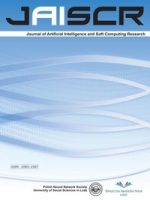 |
Efficient Image Retrieval by Fuzzy Rules from Boosting and MetaheuristicMarcin Korytkowski, Roman Senkerik , Magdalena M. Scherer, Rafal A. Angryk, Miroslaw Kordos, Agnieszka Siwocha Journal of Artificial Intelligence and Soft Computing Research Volume 10: Issue 1, 2020 Fast content-based image retrieval is still a challenge for computer systems. We present a novel method aimed at classifying images by fuzzy rules and local image features. The fuzzy rule base is generated in the first stage by a boosting procedure. Boosting meta-learning is used to find the most representative local features. We briefly explore the utilization of metaheuristic algorithms for the various tasks of fuzzy systems optimization. We also provide a comprehensive description of the current best-performing DISH algorithm, which represents a powerful version of the differential evolution algorithm with effective embedded mechanisms for stronger exploration and preservation of the population diversity, designed for higher dimensional and complex optimization tasks. The algorithm is used to fine-tune the fuzzy rule base. The fuzzy rules can also be used to create a database index to retrieve images similar to the query image fast. The proposed approach is tested on a state-of-the-art image dataset and compared with the bag-of-features image representation model combined with the Support Vector Machine classification. The novel method gives a better classification accuracy, and the time of the training and testing process is significantly shorter. Cite as: Korytkowski, M., Senkerik, R., Scherer, M. M., Angryk, R. A., Kordos, M., & Siwocha, A. (2020). Efficient image retrieval by fuzzy rules from boosting and metaheuristic. Journal of Artificial Intelligence and Soft Computing Research, 10(1), 57-69. DOI: https://doi.org/10.2478/jaiscr-2020-0005. |
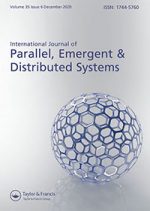 |
Chaos-enhanced multiple-choice strategy for particle swarm optimisationMichal Pluhacek, Roman Senkerik, Adam Viktorin, Tomas Kadavy International Journal of Parallel, Emergent and Distributed Systems, Volume 35, 2020 – Issue 6 In this paper, we use pseudo-random number generators based on six chaotic systems to enhance the performance of multiple-choice strategy for particle swarm optimisation (PSO). The multiple-choice strategy is a heterogeneous swarm-based method. We present the results of benchmark testing using the latest CEC’17 benchmark suite. The performance of the proposed method is compared with the canonical PSO and evaluated for statistical significance Cite as: Pluhacek, M., Senkerik, R., Viktorin, A., & Kadavy, T. (2020). Chaos-enhanced multiple-choice strategy for particle swarm optimisation. International Journal of Parallel, Emergent and Distributed Systems, 35(6), 603-616. DOI: https://doi.org/10.1080/17445760.2018.1487064 |
 |
Sustainable waste-to-energy facility location: Influence of demand on energy salesDušan Hrabec, Radovan Šomplák, Vlastimír Nevrlý, Adam Viktorin. Michal Pluháček, Pavel Popela Energy, Volume 207, 15 September 2020, 118257 Waste-to-Energy facility location with practical insights into its economic sustainability is assessed by two mathematical models. The first model minimising transportation and investment costs leads to a mixed-integer linear problem, for which commercial solvers perform very well. However, economic performance, which is needed for long-term projects requiring large investments, is not met when the capacity of the plant is not fully utilised. This can be resolved by a revenue model defining gate fees for potential plant capacities. Therefore, a second model including penalty cost functions associated with reduced energy sales and unutilised capacity of plants is developed. This leads to a non-linear model where solvers perform well for small and medium-size instances and so a modified meta-heuristic algorithm is proposed. Both models are applied to data from the Czech Republic. Insights into performance of the models and their economical sustainability using demand influence on the energy sales are provided. While the solution of the linear model proposes a higher number of facilities with less total capacity repletion, the non-linear model suggests a smaller number of facilities with higher total repletion presenting a reasonable sustainable solution. The strategy supports the decision-making of authorities for the sustainable planning of new projects. Cite as: Hrabec, D., Šomplák, R., Nevrlý, V., Viktorin, A., Pluháček, M., & Popela, P. (2020). Sustainable waste-to-energy facility location: Influence of demand on energy sales. Energy, 207, 118257. DOI: https://doi.org/10.1016/j.energy.2020.118257. |
 |
Distance based parameter adaptation for Success-History based Differential EvolutionAdam Viktorin, Roman Senkerik, Michal Pluhacek, Tomas Kadavy, Ales Zamuda Swarm and Evolutionary Computation Volume 50, November 2019 This paper proposes a simple, yet effective, modification to scaling factor and crossover rate adaptation in Success-History based Adaptive Differential Evolution (SHADE), which can be used as a framework to all SHADE-based algorithms. The performance impact of the proposed method is shown on the real-parameter single objective optimization (CEC2015 and CEC2017) benchmark sets in 10, 30, 50, and 100 dimensions for all SHADE, L-SHADE (SHADE with linear decrease of population size), and jSO algorithms. The proposed distance based parameter adaptation is designed to address the premature convergence of SHADE–based algorithms in higher dimensional search spaces to maintain a longer exploration phase. This design effectiveness is supported by presenting a population clustering analysis, along with a population diversity measure. Also, the new distance based algorithm versions (Db_SHADE, DbL_SHADE, and DISH) have obtained significantly better optimization results than their canonical counterparts (SHADE, L_SHADE, and jSO) in 30, 50, and 100 dimensional functions. Cite as: Viktorin, A., Senkerik, R., Pluhacek, M., Kadavy, T., & Zamuda, A. (2019). Distance based parameter adaptation for success-history based differential evolution. Swarm and Evolutionary Computation, 50, 100462. DOI: https://doi.org/10.1016/j.swevo.2018.10.013. |
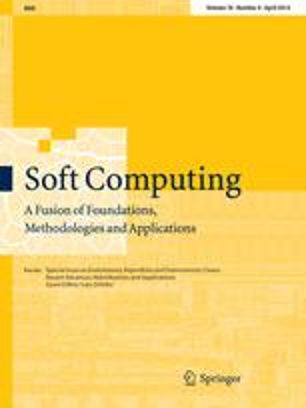 |
Particle swarm optimization algorithm driven by multichaotic number generatorMichal Pluhacek, Roman Senkerik, Ivan Zelinka Soft Computing, April 2014, Volume 18, Issue 4, pp 631–639 In this paper, the utilization of different chaotic systems as pseudo-random number generators (PRNGs) for velocity calculation in the PSO algorithm are proposed. Two chaos-based PRNGs are used alternately within one run of the PSO algorithm and dynamically switched over when a certain criterion is met. By using this unique technique, it is possible to improve the performance of PSO algorithm as it is demonstrated on different benchmark functions. Cite as: Pluhacek, M., Senkerik, R., & Zelinka, I. (2014). Particle swarm optimization algorithm driven by multichaotic number generator. Soft Computing, 18(4), 631-639. DOI: https://doi.org/10.1007/s00500-014-1222-z. |
